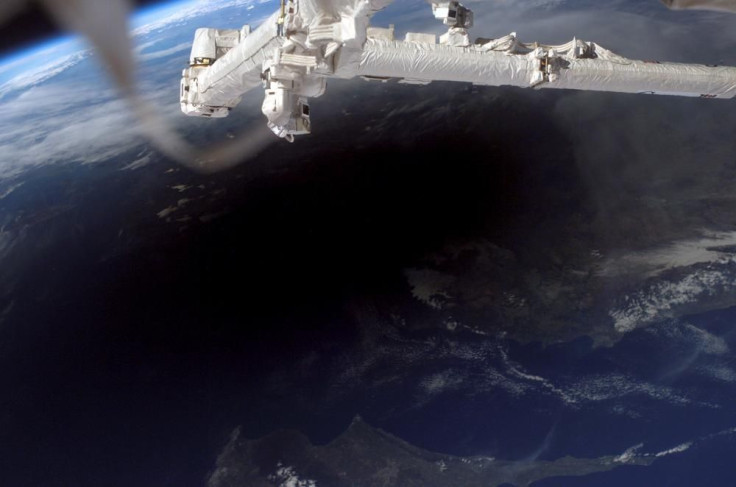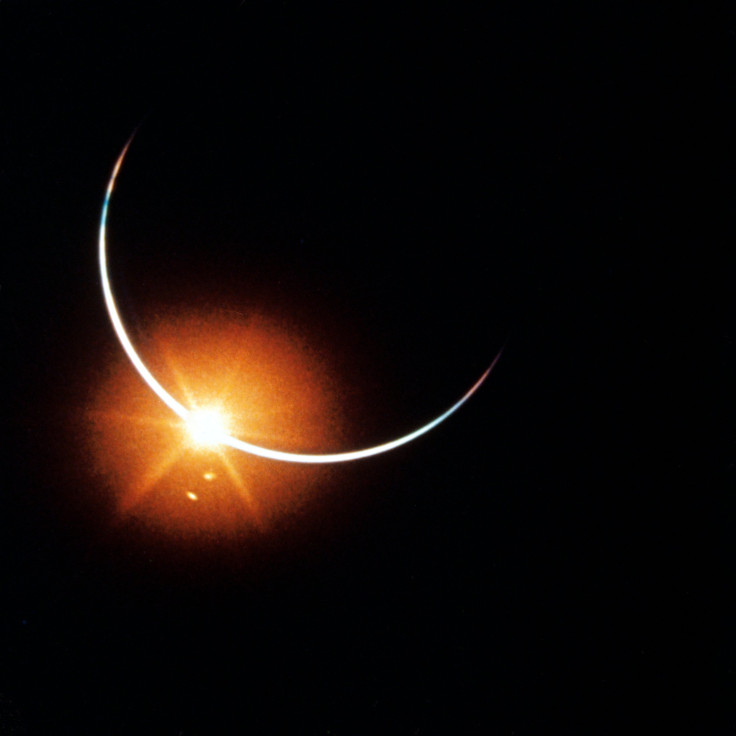Watching Total Solar Eclipse From The Air? Airplane, Astronaut Views

The most ideal place to view a solar eclipse is not always on the ground — the best seats in the house might belong to the people who are midair as the moon passes in front of the sun and covers a circular patch of Earth in darkness.
There are a bunch of lucky people who will be able to watch the solar eclipse from above the clouds. The Points Guy compiled a list of flights that are going through the path of totality for the eclipse, as it makes its way across the United States from Oregon to South Carolina. Southwest Airlines was reportedly making more flights available to people who wanted the high-altitude experience, including handing out special solar eclipse viewing glasses to passengers so they would not have to scramble to find their own.
The Points Guy pointed out that there didn’t appear to be any eclipse-cutting flights on the Boeing 787 Dreamliner, the passenger plane with the largest windows available.
Astronauts have also often had fantastic views of an eclipse. Over the weekend Apollo 11 astronaut Buzz Aldrin, who was the second man to set foot on the moon after Neil Armstrong, tweeted a memory about his groundbreaking journey to the lunar surface in 1969
“I got to see quite a few solar eclipses,” he wrote. “Every time we orbited into the shadow of the moon.”
It occurred to me that I got to see quite a few solar eclipses. Every time we orbited into the shadow of the moon. #Apollo11 #eclipse2017
Aldrin, Armstrong and the third astronaut on their mission, Michael Collins, were not the only ones who got that spectacular sight. During the Apollo 12 mission later in the same year, the crew of Pete Conrad, Dick Gordon and Alan Bean took a photo of a solar eclipse while they were on their way home.

But it doesn’t take a trip as far as the moon for an astronaut to see an eclipse — crew on the International Space Station see them from time to time. In March 2015, the European Space Agency’s Samantha Cristoforetti took a bunch of photos of an eclipse from the ISS, sharing them with the caption, “Orbital sunrise and the #SolarEclipse … could it go any better?”

The ISS is also in a good position to catch a photo of the shadow cast on Earth during a total solar eclipse. During a solar eclipse in March 2006, for example, the ISS watched as that shadow moved across Turkey, Cyprus and the Mediterranean Sea.
During the total solar eclipse today, the ISS will be watching once again. According to NASA, as the path of totality cuts across the United States, the ISS will not have a view of a total solar eclipse, but the astronauts aboard will be able to see the moon’s shadow.
© Copyright IBTimes 2024. All rights reserved.





















